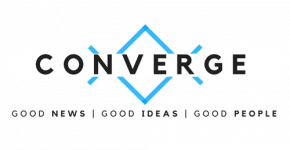The boardroom is perhaps the most crucial area in your office. It’s where ideas are born and critical meetings are conducted. That said, its design playsan important role in sparking ideas and fostering healthy professional relationships.
Have you ever sat in a boardroom that’s gloomy and lifeless? If so, you certainly felt bored and uninspired throughout the meeting. You also probably felt sleepy and ill-tempered, because there’s nothing nice to look at.
On the other hand, if you’ve been in a boardroom that’s well-lit, streamlined, and brightly-colored, you surely felt happier and more excited to present your ideas. Your creativity was at its peak, and time felt fast for you because everyone was highly participative that there was no dead air.
That said, if you think your own boardroom relates more to the first sample situation, here are some helpful tips to get you out of that predicament.
1. Place it Right
When you’re having any kind of company meeting or a meeting with a client, you need to be far from distractions as possible. You can’t achieve that if your boardroom is placed near the lobby, or worse, near the mess hall. Find a spacious area in your office where distraction-free meetings can take place, like near the CEO’s office, for example.
2. Pay Attention to Colors
Colors have more impact than you might think. Blue, for example, stimulates tranquility and calmness, so if you paint your boardroom’s wall this color, your employees or clients might feel agreeable and relaxed. If you use red, arguments may be provoked because the colorrouses strong emotions, including anger.
Consider the colors white, yellow, purple, orange, and pink. In color psychology, these hues are shown to stir positive feelings like being energetic, wise, reliable, enthusiastic, and kind.
3. Size it Right
Nobody ever enjoys being in a room where they bump elbows with their seatmates. It’s the perfect recipe for distraction and moodiness, so be mindful of your boardroom’s size. Even if your team is compromised only of a few people, having ample space to breathe in is still necessary. Design your boardroom in a size that’ll easily accommodate the number of people you usually sit down with during a meeting.
4. Use High-Quality Furniture
Unless you’re fine with your clients using a table with uneven legs, you should invest in high-quality and sleek designer boardroom tables. Your furniture choices will reflect your professionalism, so choose carefully, and with the intention of impressing your clients and employees, without foregoing functionality. The chairs should also be comfortable, because you may have long-duration meetings.
Consider the style of the table as well. The U-shaped or horseshoe-shaped style allows participants to engage more with the speaker, while the classic, one long table style may be more intimate. Decide on a style based on your clients’ and employees’ needs.
5. Provide Amenities
Having some refreshments within reach will be convenient. Place a refrigerator in the boardroom, ensuring that drinks are stored inside before a meeting starts. Provide some storage spaces as well in case your clients bring lots of items with them.
6. Brighten the Space
Ideally, the boardroom should have a large window so that natural light can come in. Use shades or blinds so that the sun’s glare won’t be too distracting. Keep the number of overhead lights to a minimum, and don’t use bulbs that emit too much heat.
7. Incorporate Technology
Projector screens, computers, internet connection, and sound system should be available in the boardroom. The size of the projector screen should make texts and other key visuals readable. But don’t make it too big, either because the meeting participants may be overwhelmed. Don’t forget to have the right cables as well.
With these boardroom design tips applied, your meetings will always be fruitful, with its participants brimming with ideas and inspiration.





